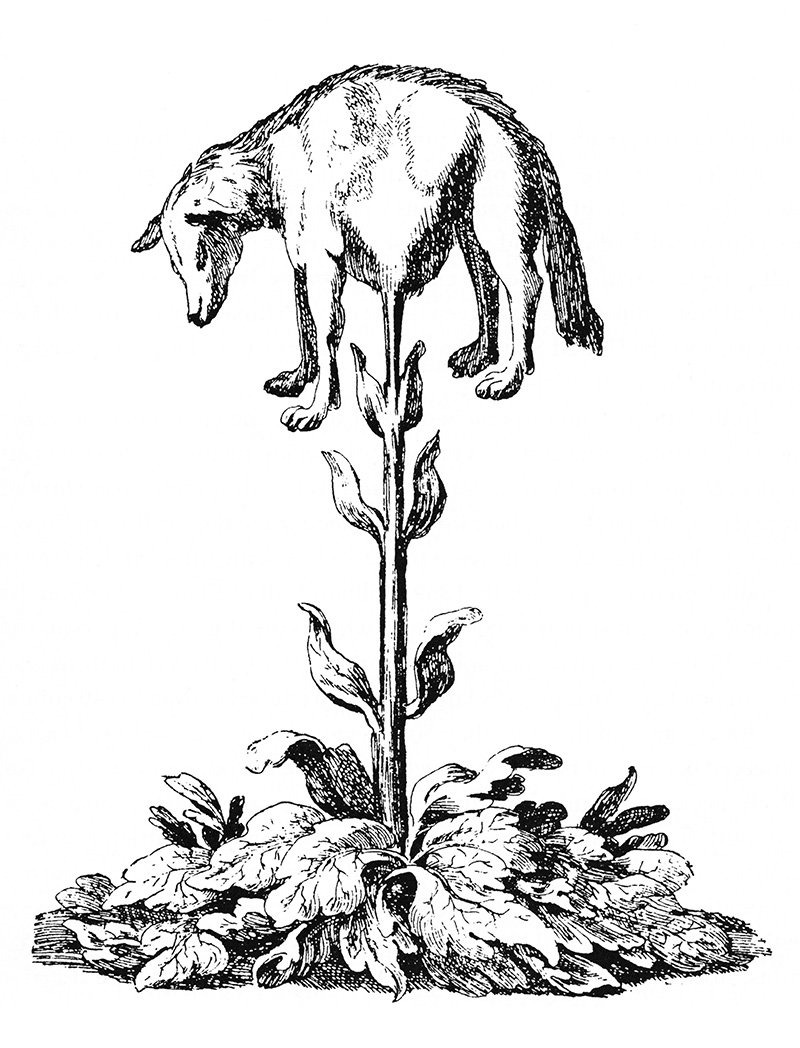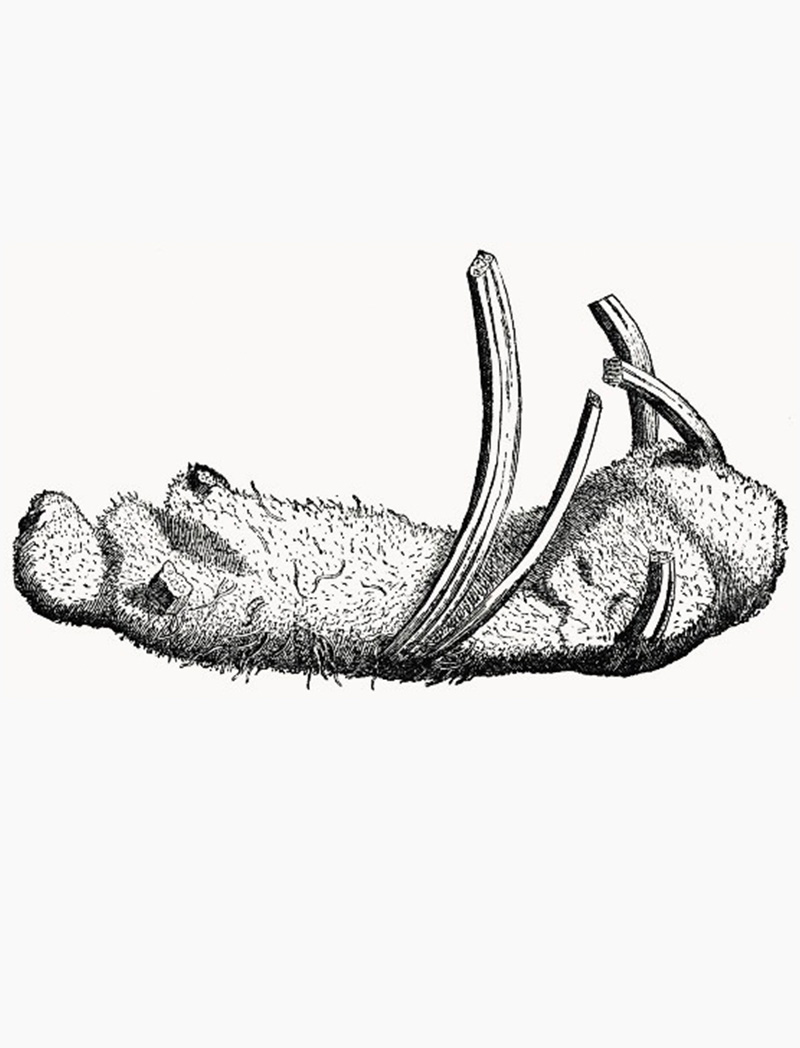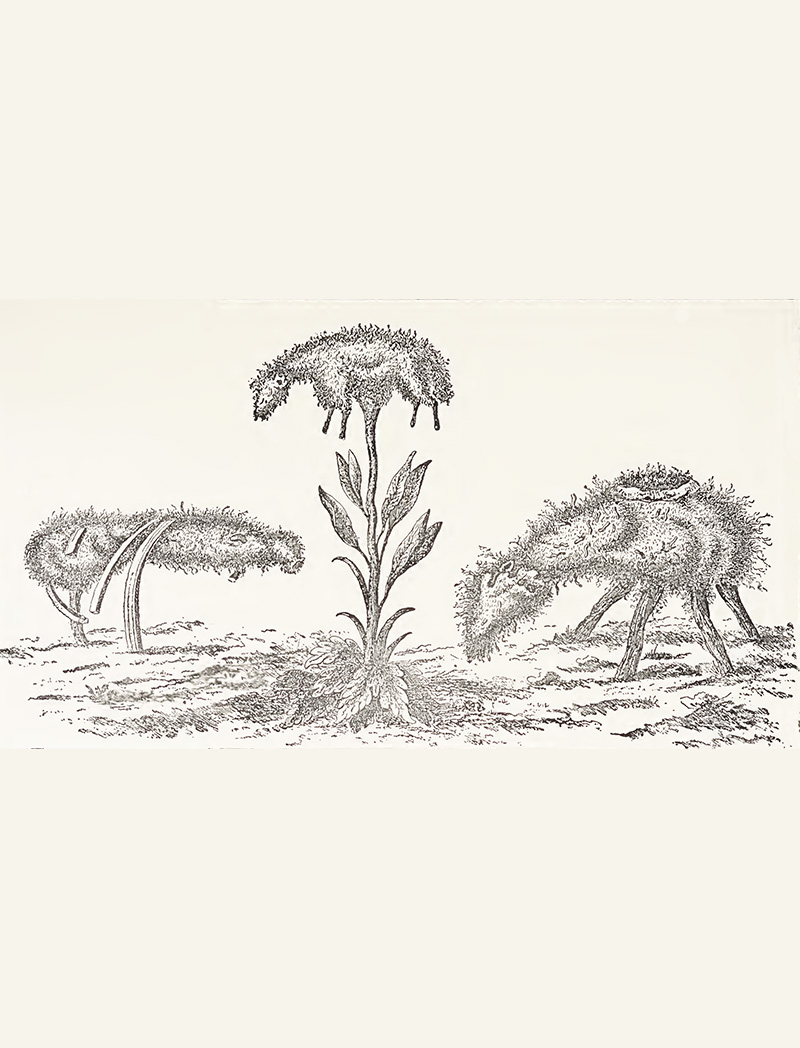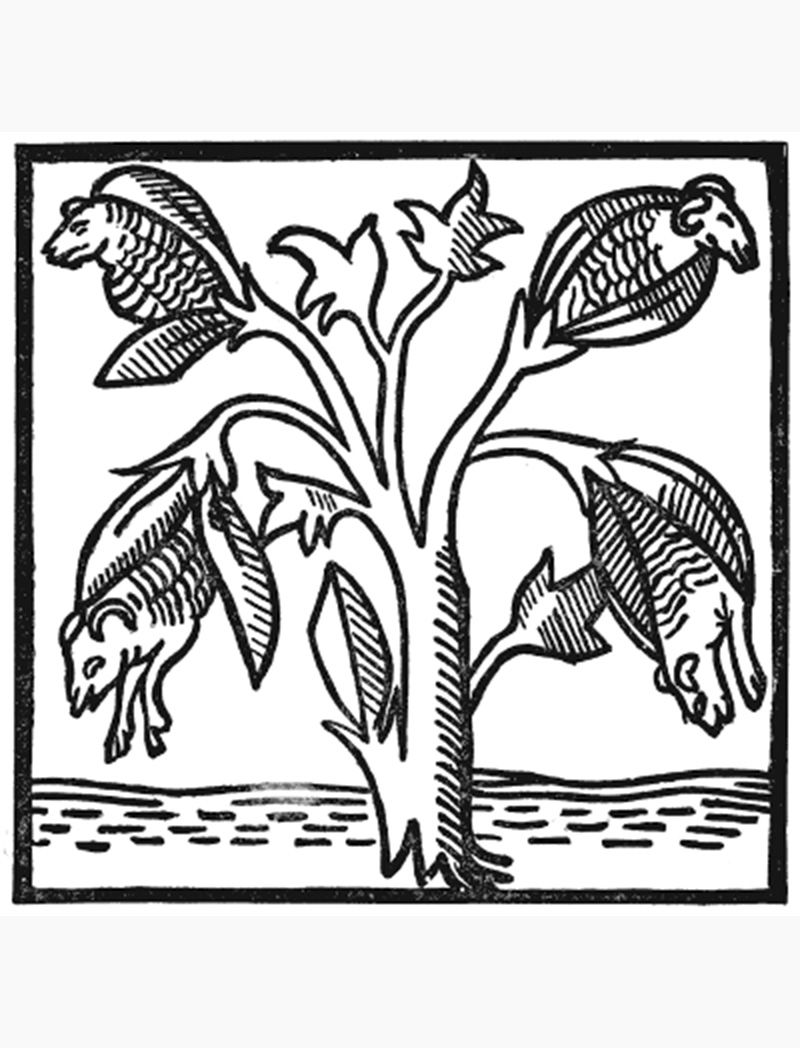PERSPECTIVES
A Zoophyte Fantasy?
For centuries, Europeans believed that cotton grew on lamb-bearing trees. Since the early days of the Indus Valley Civilisation, cotton fabrics produced in South Asia have captivated foreign markets. Particularly in Europe, these textiles were so revered for their softness and brilliance that until the sixteenth century, knowledge of cotton production was a subject of fantasy.
The Greek geographer Herodotus wrote in the fifth century BCE that cotton was a type of wool that grew on wild trees in India, and was superior to the wool produced in Europe. This early assumption fuelled theories of the fibre being produced by a zoophyte — a plant that bore lambs as fruit. This was illustrated most notably by the English writer Sir John Mandeville, during his alleged travels to Asia in the fourteenth century, with the caption: “There grew a wonderful tree which bore tiny lambs on the endes [sic] of its branches. These branches were so pliable that they bent down to allow the lambs to feed when they are hungry.”
As Indian cotton travelled across the Hindu Kush mountains and Central Asia to reach Europe, the fabled plant also became widely associated with these regions and came to be referred to as the “Vegetable Lamb of Tartary,” which has been vividly described and represented by merchants, writers and explorers. Egyptian cotton, which also travelled through similar trade routes to Europe, was imbued with similar fantasy.
Contrary to myth, the fibres have always been sourced from cotton bolls that grow on the slow-growing cotton plant, bush or tree. In German, however, cotton is still known as baumwolle, which translates to “tree-wool.”








